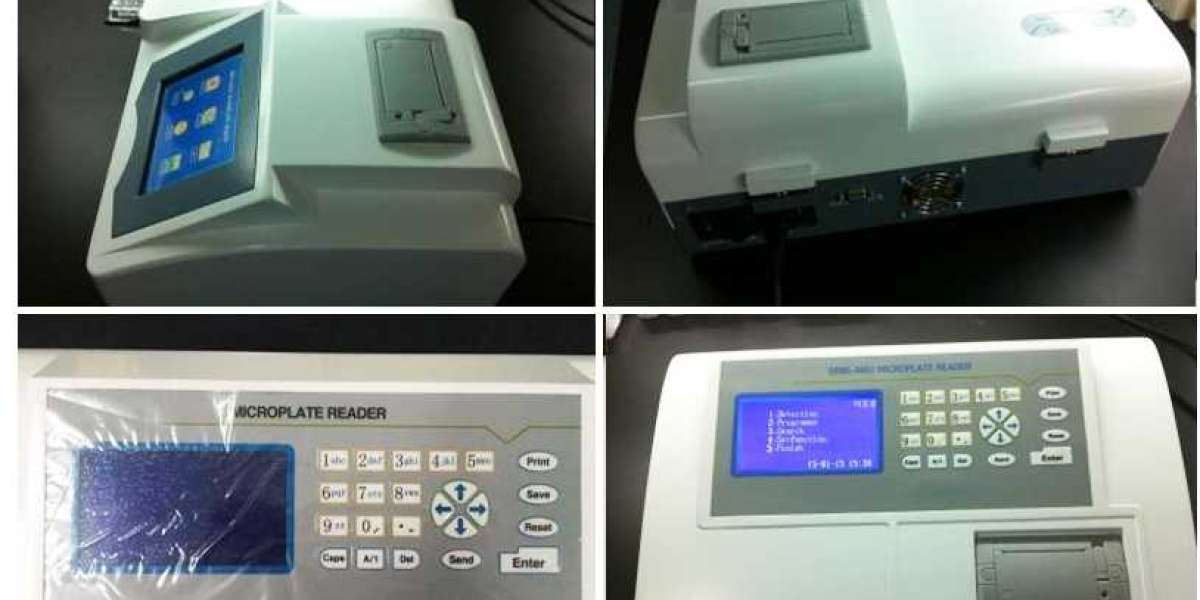The term "enzyme-linked immunosorbent assay" refers to what ELISA stands for. It is a method of analysis that involves immobilizing an antigen on a solid surface in order to determine the concentrations of peptides, proteins, antibodies, or hormones. The procedure involves the utilization of an automated ELISA microplate reader in conjunction with a number of microplates. A microplate is a plate that contains 96 indentations, also known as "wells," and these microplates function as miniature test tubes combined in a single molded plastic plate. In the realms of biological research and observation, such as the detection of cancer as well as pharmaceutical discovery, development, and quality control, the microplate reader is an instrument that is indispensable. The ELISA reader's operating principle, various applications, and historical context are discussed in the following paragraphs.
What Is the ELISA Reader Principle, and Why Is It Important?
The presence of antibodies, antigens, hormones, proteins, or any other substances in a solution is one of the most common questions that biochemists seek to answer by testing liquid samples
They accomplish this goal by conjugating, or attaching, antigens to antibodies, which are blood proteins produced in response to various antigens present in the sample
This causes a reaction of some kind, which most commonly manifests as a change in color
Scientists are able to measure the reactions of antigens and antibodies in a solution through the activity of enzymes thanks to a specialized spectrophotometer called an ELISA reader. A spectrophotometer is an instrument that measures the intensity of light throughout a portion of the electromagnetic spectrum.
In a microplate reader, colorimetric, fluorometric, or luminescent reagents are used to measure the concentration of the compound of interest by producing a signal that can be detected by the reader. This reader works in a manner that is analogous to a conventional spectrophotometer, but it is able to process 96, 394, or 1536 samples in one read sequence – and it does so quickly.
The typical microplate has 96 sample wells, which are organized as 8 columns and 12 rows of wells, giving it a total of 96 wells. On the other hand, some readers have 384 wells or even more in order to maximize the testing of reagents. An optical system is incorporated into the automated ELISA reader. This system shines light on the samples and then analyzes the light's intensity and wavelength as it reflects off of the samples. This gives the reader the ability to calculate the light absorption rate of each sample, and it also converts the returning light beams into data sets so that users can interpret the results in an understandable manner.
The Direct ELISA and the Indirect ELISA are two examples of the ELISA reader principle that are commonly used.
What does "Direct ELISA" stand for?
- Immobilization of the antigen occurs directly onto the well of the microplate when performing direct ELISA testing
- After adding the antibody to the solution, it immediately begins to bind to the antigen, thereby preparing the antigen for the subsequent addition of an enzyme
- In the final step, the enzyme that is used for testing is introduced, which causes a reaction as well as a discernible shift in color
- There are fewer reagents required, fewer steps are required, and there are no reactions with a secondary antibody that could confuse the results
- The advantages include these things
What exactly is meant by indirect ELISA?
The indirect ELISA method consists of two stages: in the first stage, the antigen sample is deposited into one of the wells of the microplate
A primary antibody is initially added, and then it begins to bind to the sample
The primary antibody is followed by the addition of a secondary antibody, which binds to the primary antibody
This approach provides a great deal of flexibility while also amplifying the signal
On the other hand, it could lead to cross-reactivity from the secondary antibody, which would make the result less clear
The ELISA reader principle has a number of applications; what are they?
There are many applications for ELISA readers. The reactions that can be detected by a reader allow for the diagnosis of a variety of conditions. The following are some examples of these:AIDS, ebola, Lyme disease, rotavirus, cancer, anemia, and rotavirus are all examples of infectious diseases. In the course of the COVID-19 epidemic, tests were able to assist in detecting the presence of antibodies in the blood samples. Finally, the reader is utilized in the food industry to identify any allergens that may be present in the food.
Since the beginning of the 1980s, Drawell has established itself as a market leader in the distribution of scientific goods and medical equipment. They are experts in integrating the users' instruments into individualized solutions for laboratory automation. You can get more information about the ELISA reader principle by calling 973-376-7400, sending them an email with your questions, or visiting their website to message them online.









